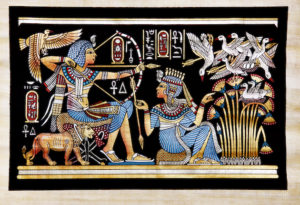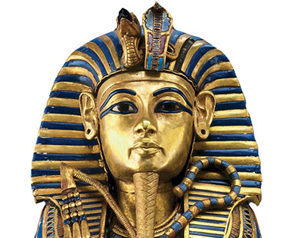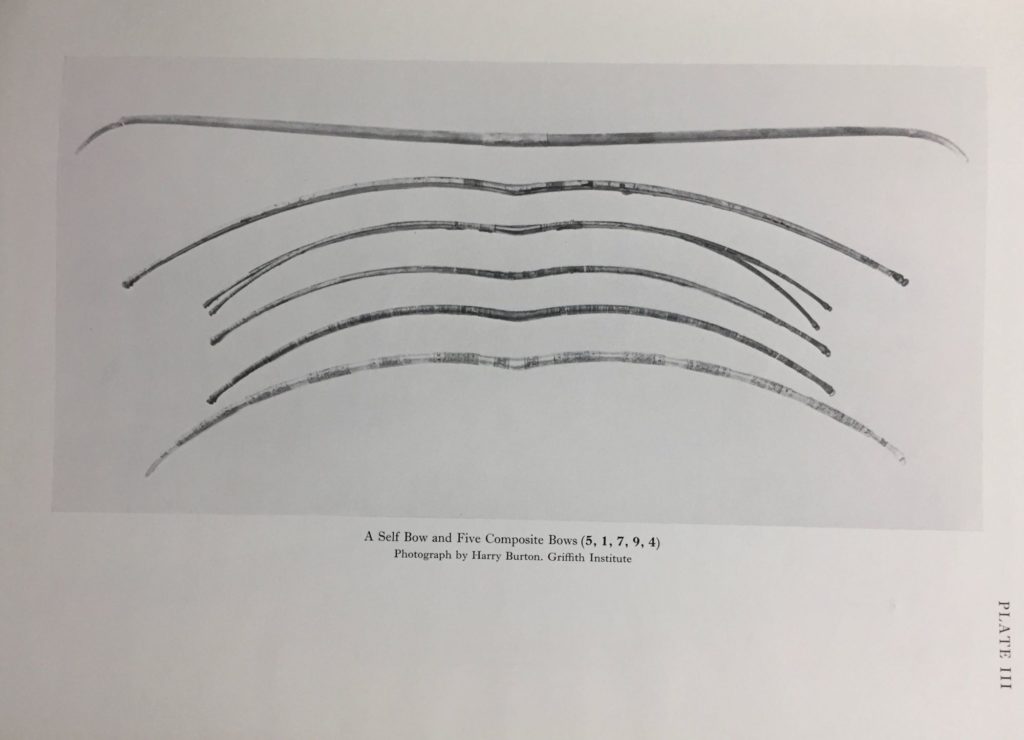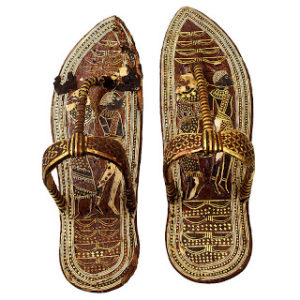Egyptian Bow
Ancient Egypt
Egypt has a long, fascinating history and its achievements in writing and architecture still inspire wonder to this day. The ancient Egyptian empire can be divided into three kingdoms, the “Old Kingdom” (2686 BC- 2181 BC), the “Middle Kingdom” (2134 BC- 1690 BC), and the “New Kingdom” (1549 BC-1069 BC). The ancient Egyptians used the bow and arrow extensively throughout their long history. The first Egyptian bow used was likely a simple self-bow made of antelope horn or wood.

Ancient Egyptian Weapons
A composite bow was later adopted in the New Kingdom, after fighting off invading nomads from Asia known as the Hyskos. The invaders also introduced chariot warfare, which the Egyptians readily adopted into their own army. The upper ranks of society made up the chariot corps. Typical chariot units consisted of two horses pulling the chariot into battle with one driver at the reigns and an archer wielding his composite bow and spears.

Egyptian Chariot Battle
After finally defeating the Hyskos, the Egyptians were much more aggressive in the security of their borders, launching incursions in all directions. Ramses II, considered to be the greatest of all pharaohs, marched his army into Syria to engage the Hittites. His campaign culminated in the Battle of Kadesh, most likely the largest chariot battle of all time, with an estimated 5000-6000 chariots.

What Type of Bow Did the Ancient Egyptians Use?
As mentioned. The Egyptian bow had undergone an evolution over the ages and through the kingdoms that ruled the Nile. First, cam simple wooden self-bows. They were relatively lengthy bows, with many being around 1 to 2 meters in length. They are similar in form to other self-bows used in Africa in ancient and even more modern times. They have distinctive decurved tips and were likely used in the very earliest of times in Egypt.
During the New Kingdom (1549 BC-1069 BC) however, a new form of warfare and bow would be introduced to Egypt from nomadic invaders from the North. The Hyskos would eventually rule Egypt for a time, as they were formidable in their military and were able to defeat Egyptian armies on many occasions. The Hyskos would introduce the horse, the chariot, and the composite bow to the Egyptians.
This new form of Egyptian bow was much shorter than the traditional self-bows used up until this time. It was also made from a core of wood, with horn strips adhered to the belly of the bow. The entire configuration was then layered in a lattice of sinew. A true composite bow! The shape of the Egyptian composite bow is also quite unique. This shape is called an angular bow. The shape of the bow unstrung forms a flattened “W”, with subtly reflexed limbs. When strung, the bow takes on a triangular form, and when fully drawn, reveals a lovely, full arc.

Egyptian Bows & The Pharaohs
The Ancient Egyptians fought many battles with the intention of keeping their jealous enemies from settling in the Nile Valley. Their enemies were referred to as the “Nine Bows”. The number nine was not taken literally, as their enemies had changed over time. The number three was synonymous with plurality in Ancient Egypt. Therefore the number nine could be interpreted as “the Plural of Plurals” which was an expression used to describe the entirety of the Empire’s enemies. An Egyptian bow was ritualistically broken before battles to help ensure victory. Nine bows can be seen on a pair of sandals that were recovered from Tutankhamun’s tomb. When the pharaoh walked about, he would be symbolically stepping on Egypt’s enemies.
